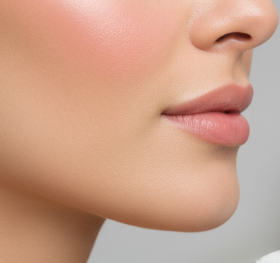Treatment Overview
Mandibular Angle Definition Fillers in Korea are an advanced, non-surgical cosmetic treatment aimed at enhancing the jawline by defining the mandibular angle—the prominent edge at the back of the lower jaw. This area is key to achieving a strong, angular, and aesthetically pleasing lower face. Using dermal fillers, particularly hyaluronic acid (HA) and calcium hydroxylapatite, Korean dermatologists can sculpt the jawline, improve facial balance, and provide a more contoured profile.
This procedure has become highly popular among both men and women seeking sharp, masculine or feminine jawlines without undergoing invasive surgery. Korea has gained a global reputation for mandibular angle filler treatments due to its combination of cutting-edge techniques, meticulous attention to detail, and artistic facial contouring expertise.
Purpose & Benefits
Mandibular Angle Definition Fillers provide several aesthetic and functional benefits:
- Enhanced Jawline Definition: Emphasizes the mandibular angle for a structured, defined jaw.
- Lower Face Contouring: Improves the overall shape and proportion of the lower face.
- Facial Symmetry: Balances both sides of the jawline for a more harmonious appearance.
- Youthful Appearance: Lifts and smooths the lower face, reducing sagging and jowls.
- Non-Surgical Approach: Avoids the risks, recovery time, and cost of surgical jawline contouring.
- Immediate Results: Noticeable improvement is visible immediately after treatment.
- Customizable Outcomes: The angle and contour can be tailored for subtle enhancement or more dramatic definition.
By focusing on the mandibular angle, patients can achieve a stronger profile while maintaining natural facial harmony.
Ideal Candidates
Mandibular Angle Definition Fillers are suitable for:
- Individuals with a weak or poorly defined mandibular angle.
- Patients with a square, wide, or asymmetrical jawline seeking refinement.
- Those with sagging jowls or volume loss in the lower face.
- Both men and women seeking sharper, more defined jawlines.
- Patients preferring a non-surgical alternative to implants or jawline surgery.
Candidates should be in good health and have realistic expectations about achievable results. A professional consultation ensures a treatment plan tailored to the individual’s facial anatomy and aesthetic goals.
Possible Risks & Complications
While generally safe, mandibular angle fillers may have potential side effects:
- Mild swelling, redness, or bruising at injection sites.
- Temporary asymmetry if filler placement is uneven.
- Rare filler migration or nodule formation.
- Allergic reactions (extremely uncommon with premium Korean fillers).
Korean clinics minimize these risks through ultrasound-guided injections, micro-cannula techniques, and precise 3D facial mapping, ensuring accurate and safe outcomes.
Techniques Used in Korea
Korean dermatologists use a combination of advanced techniques to optimize mandibular angle definition:
- Hyaluronic Acid Fillers: Provide soft, natural volume and smooth contours.
- Calcium Hydroxylapatite Fillers: Offer longer-lasting structure and lift for stronger angles.
- Layered Injection Methods: Ensure seamless blending with the chin and jawline.
- Combination with Botox: Masseter slimming injections help refine the lower face and enhance the mandibular angle.
- Micro-cannula and Ultrasound Guidance: Reduce bruising, swelling, and risk of vascular complications.
- 3D Facial Analysis: Guides precise filler placement for symmetrical, balanced results.
The focus in Korea is always natural-looking enhancement, creating a defined but harmonious jawline that complements the rest of the facial features.
Recovery & Aftercare
Recovery is fast, with most patients returning to normal activities immediately. Recommended aftercare includes:
- Avoiding alcohol, strenuous exercise, and hot environments for 24–48 hours.
- Using cold compresses to reduce swelling and bruising.
- Sleeping with the head slightly elevated during the first night.
- Following up for touch-ups or minor adjustments if necessary.
Mild swelling or bruising typically resolves within 3–7 days, while the final results settle in 1–2 weeks.
Results & Longevity
- Immediate Results: Noticeable mandibular angle enhancement right after the procedure.
- Full Results: Achieved within 1–2 weeks as swelling decreases.
- Hyaluronic Acid Fillers: Last 9–12 months.
- Calcium Hydroxylapatite Fillers: Last 12–18 months.
Regular maintenance treatments help maintain a sharp, defined mandibular angle over time.
Treatment Process in Korea
The procedure is structured for precision and optimal outcomes:
- Consultation & Facial Analysis: 3D imaging evaluates jawline symmetry and mandibular angle.
- Customized Injection Plan: Filler type, volume, and placement are personalized to the patient’s facial anatomy.
- Precision Injection: Micro-cannula or ultrasound-guided techniques ensure safe, accurate placement.
- Follow-Up & Adjustment: Clinics monitor results and perform touch-ups if necessary for perfect balance.
Korea’s reputation as a global hub for mandibular angle fillers comes from skilled specialists, advanced technology, and meticulous artistry, attracting patients worldwide for non-surgical lower face enhancements.
Cost Range in Korea
- Per syringe: 300,000 – 600,000 KRW ($220 – $440 USD)
- Full mandibular angle enhancement session: 1,000,000 – 2,500,000 KRW ($750 – $1,850 USD)
Prices vary depending on clinic, filler brand, and number of syringes used. Many clinics offer combined packages with Botox for masseter slimming.
Popular Clinics in Korea
- Banobagi Plastic Surgery Clinic (Seoul) – Experts in mandibular angle and jawline sculpting.
- ID Hospital (Seoul) – Offers surgical and non-surgical lower face contouring.
- JW Plastic Surgery Clinic – Known for precision injectable techniques and patient safety.
- Oracle Dermatology Clinic – Popular among international patients for non-surgical facial contouring.
- Cheongdam Renew Clinic – Foreigner-friendly clinic specializing in natural mandibular angle aesthetics.




